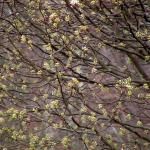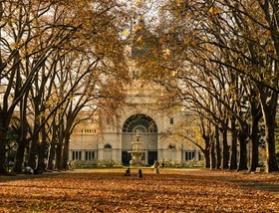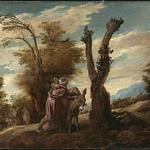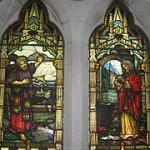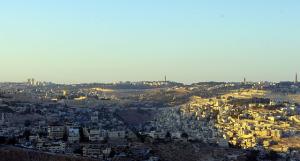
Directing a tour to the Holy Land was a blessing for me. I loved being able to teach about the Savior at the Sea of Galilee and in Jerusalem—the places He lived and served during His mortal ministry. But many of the sacred places have been covered by churches and other buildings, changing the scenes dramatically from their appearance two thousand years ago. Those in our group who had come to “walk where Jesus walked” found this walking often impossible. And some sacred places that could be seen had been covered with well-intentioned tapestries that prevented people from seeing them as Jesus would have seen them.
In the Holy Land, we can connect with Christ by looking past the physical coverings to feel the spirit within. In our personal sacred places, we must look past spiritual coverings to connect with His covenants and His love.
Changes
The Church of the Nativity in Bethlehem is built over what is thought to be the cave that was the “stable” in which Christ was born. Today visitors can enter the cave, but they find the walls covered in embroidered tapestries and the ground covered with marble. And today layers and layers of construction in Jerusalem cover the Via Dolorosa, considered to be the actual path Jesus walked as he carried the cross to Calvary.
At places like these, I helped my group to understand that these sites are sacred because of the events that occurred there (or nearby), but also because of the Christians over the centuries who have traveled to these locations and venerated them with their faith.
I also encouraged members of our group to get past the coverings. In the cave at Bethlehem, I reverently and carefully pushed aside a corner of the tapestry to reveal the rough wall of the cave. As a group we were able to think about what it must have looked like when Joseph helped Mary deliver Jesus.
In Jerusalem I took the group to the Pool of Bethesda where they could climb down to the original site because it has been excavated. We also went to the temple steps on the south of the temple mount that have been uncovered through careful excavation. At those moments, the changes enabled us to truly walk where Jesus walked during His earthly ministry.
Other Coverings
Our hearts and minds can see and feel things that do not require eyes and feet.
Physical changes in the Holy Land are not the only coverings that interfere with those who seek to connect with Christ. Tragically, the real Christ has been covered by years of false beliefs and traditions. We need to lift the coverings of apostasy and misunderstanding that can conceal our accurate view. Too many people settle for ritual instead of religion and for checking off commandments instead of emulating in worship.
How do we lift the corner of the tapestry and feel Christ as He is or excavate through accumulated debris to understand His miracles and His teachings. Elder David A. Bednar has provided an answer:
Living and loving covenant commitments creates a connection with the Lord that is deeply personal and spiritually powerful. As we honor the conditions of sacred covenants and ordinances, we gradually and incrementally are drawn closer to Him (see 3 Nephi 27:14-15) and experience the impact of His divinity and living reality in our lives. Jesus then becomes much more than the central character in scripture stories; His example and teachings influence our every desire, thought, and action (“But We Heeded Them Not,” Liahona, May 2022, 15).
We do not need to visit the Holy Land to connect closely with the Savior. Wherever we are, we can enter and consistently renew a covenant relationship with Him. In that relationship, we access His power, as He guides us and mentors us in striving to become like Him. We do not need to travel across the world to walk where the Savior once walked. We can walk with Him today. He can be with us on the covenant path as we take each step forward.



